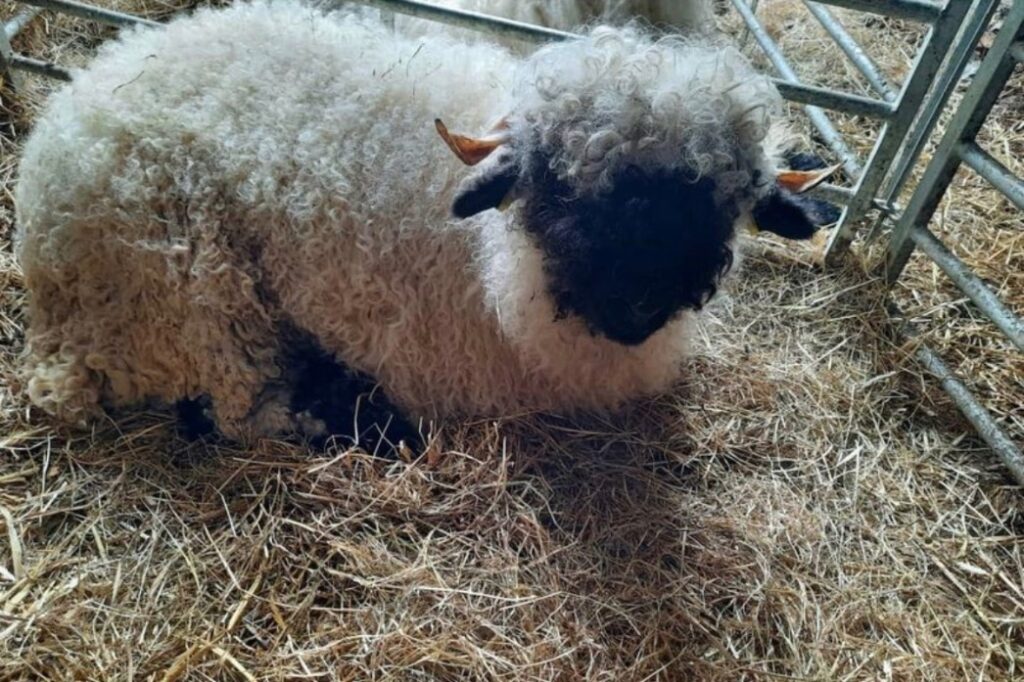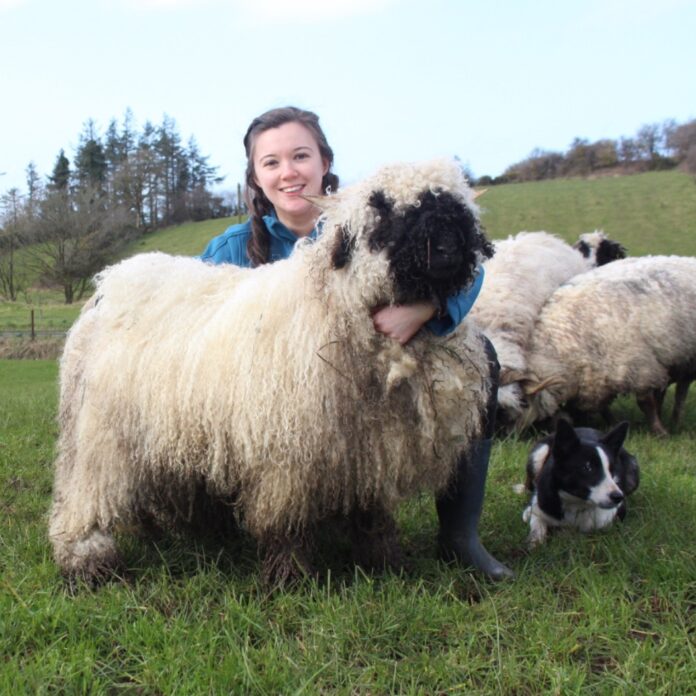In this week’s Women in Ag series, That’s Farming speaks to Cáit Wims, a dairy and sheep farmer (Valais Blacknose breeder). We discuss balancing her career, studies, and farming, starting as a young farmer, establishing her pedigree flock of Valais Blacknose and her unpredictable yet exciting life on the farm.
Farming, teaching, and furthering her own studies are a juggling act for 24-year-old Cáit Wims.
The sixth-generation farmer from Coolaney, Co Sligo, recalls her earliest memories, involving all her family members and purchasing and caring for pet lambs.
She believes this is the initial factor that sparked her love for sheep farming from a young age.
Her siblings, Cathal, Padraig, Maura, Seamus, and Eoin, are all actively involved in farming.
She established her current flock of pedigree Valais Blacknose sheep in October 2021. She acquired her foundation females through a sale renowned livestock auctioneer, Richard Beattie, held.
Besides, she is currently studying for her Green Certificate at Mountbellow Agricultural College and plans to graduate in October 2022.
Also, a home economics teacher, Cáit enjoys any opportunity she can avail of to help on the family farm, especially during busy lambing and calving seasons.
Farming in Coolaney
Her parents, Pat, and Phil, own the family enterprise. However, each family member, including her siblings, is involved in the farm’s day-to-day running.
The farm is home to commercial sheep, such as Suffolk-Belclare-cross and Charollais-cross ewes.
“We breed Suffolk-Belclare-cross ewes for their prolific traits (2.3) and good mothering instincts,” she told That’s Farming.
“The Charollais-cross hoggets are retained for their ease of lambing and good conversion rate.”
Lambing takes place from late January to early March. Following this, hoggets commence lambing in early April and they aim to lamb them over four weeks.
British Friesian is the predominant dairy breed held on the farm, with the enterprise being home to a 60-strong dairy herd.

Rosie Blacknose
The flock was initially established when Cáit purchased her first half-bred Valais Blacknose ewes.
“Since then, I have purchased three pedigree Valais Blacknose ewes, and a ram.”
Several unique traits instantly inspired Cáit to establish a flock of Valais Blacknose.
“I decided to purchase Valais Blacknose sheep as the first time I saw them, I fell in love with their unique characteristics.”
“Their curly wool and distinct markings give the Valais Blacknose their unique beautiful features; a black nose which extends to the centre of the head, surrounding their eyes.”
“Their ears are black where they meet the head, their knees and hocks have black spots, and the hoof area is black, creating the impression of boots.”
Comparatively, rams are known to have curled horns, while ewes have spiral horns.
“The Valais Blacknose sheep are renowned for being the cutest sheep in the world and for their friendly, gentle characteristics.”

Lambing season
Like many sheep farmers, Cáit most enjoys the period of welcoming new life onto the farm.
“The most enjoyable aspect of farming for me is during lambing and calving when all the excitement on the farm kicks off.”
She particularly enjoys helping and caring for all new arrivals, especially those who may require additional assistance.
“The excitement and challenges along the way make this aspect of farming thoroughly enjoyable, as no two days are ever the same.”
While the season is enjoyable, it also poses challenges for the farm.
“The most challenging part of lambing and calving season is trying to balance our time between both, to ensure every animal is attended to and gets the attention it requires,” Cáit tells That’s Farming.

Grassland management
When asked about an area of agriculture that she is passionate about, Cáit was certain of her choice.
“An area of agriculture we are passionate about on the farm is improving our grassland management system.”
“We try to reseed at least one field a year as we believe it gives the best milk yield to both cows and sheep.”
“Reseeded land gives the best growth rate in early lambs and calves, leading to a more viable farming business,” Cáit tells That’s Farming.

Farming to date
Her responsibilities on the farm vary on a day-to-day basis, particularly during lambing and calving season when days are more so unpredictable.
However, Cáit does have a firm outline of what she believes is required from a successful sheep farmer.
“It is important to have the sheep in the right body condition score, especially before mating.”
“Also, it is important to keep on top of dosing and vaccinations to prevent any diseases entering the flock.”
The highlight on her journey thus far has been the purchase of her precious pedigree Valais Blacknose flock.
Prospect for the future
She plans to establish her flock of commercial sheep alongside her flock of pedigree Valais Blacknose.
“I would also like to add new bloodlines to my current Valais Blacknose flock, such as full Swiss bloodlines. It is an exciting time for me as a young farmer starting on my adventures.”
Again, she emphasises the important influence grassland management has towards contributing to a successful livestock enterprise.
“I believe that sheep farming is a viable business as the prices for lambs held well last year.”
“You can control what happens inside the farm gate, but you have no control on prices which can impact the farm business.”
Like many others, the rising costs of essential inputs such as fertiliser and feed is a growing concern of this young farmer.
“This will have a huge impact on the farm’s profit margin if these costs continue to rise.”
Cáit concludes, “CAP 2023-2027 is the first CAP strategy plan that aims to improve gender balance through gender equality and increasing the participation of women in farming, which I believe is a positive for the future of women in farming.”
To share your story, please email [email protected]
You can read more women in ag profiles.





